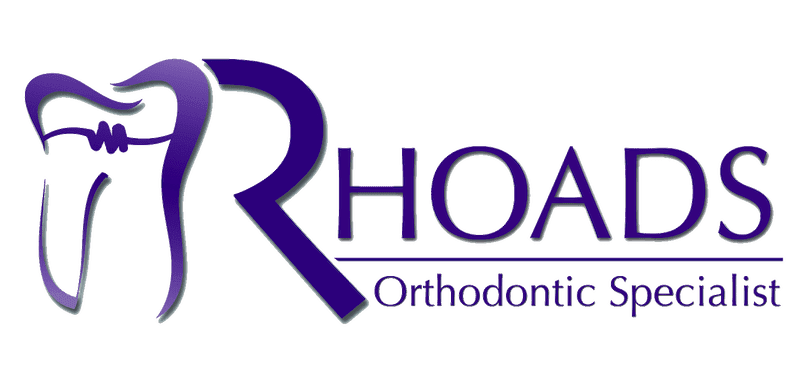The decision to undergo orthodontic treatment is one that comes with a lot to think about and consider before having braces placed or your first aligner fitted. It takes hard work and dedication on your part to get the successful results you want, and part of that process is learning more about orthodontics. Here at Rhoads Orthodontic Specialist, working towards a straighter smile means becoming more familiar with your own teeth and all the amazing things they’re capable of! Throughout your orthodontic journey, you’ll gain a good deal of knowledge about the way braces and aligners move your teeth, but one related subject you might find yourself lacking solid information on is wisdom teeth.
That’s right – wisdom teeth! These late-blooming molars don’t tend to be a common topic in orthodontics, so it can be surprising to learn the role they play in your overall oral health. We sometimes have patients or parents who fret over emerging wisdom teeth, worried that they will interfere with orthodontic treatment or knock a newly straightened smile off-kilter. Keep reading below to learn more about why we have wisdom teeth, when removing them is necessary, and what all of this means for you as a Rhoads Orthodontic Specialist patient!
What are wisdom teeth? Why do we have them?
Your wisdom teeth are the third set of molars in your mouth, and will typically be the last teeth to emerge. They grow right at the back of your jaw. Once upon a time, they played a large part in helping our ancestors chew and digest a diet that consisted primarily of coarse foods like meat, nuts, and roots. As we began evolving to a more varied diet, our jaws shrunk in response, and our wisdom teeth became more or less obsolete. They don’t serve any truly useful function in the modern world.
Many adults will go their whole lives without their wisdom teeth coming in, while others have wisdom teeth that never fully come through the gums. A significant part of the population will have their wisdom teeth come through in proper alignment with little more than some slight tenderness, and in those cases, further action is usually not necessary. But if you end up having an issue with yours, it’s important to have a dentist take a look as soon as possible. Because the wisdom teeth grow in stages over time instead of all at once, you may experience long periods of pain or discomfort throughout the extended eruption process. By knowing what to expect, you’ll be able to work with us and your dentist in order to avoid any unnecessary suffering.
Should wisdom teeth always be removed?
For many years, wisdom teeth were often preemptively removed as a way to prevent any potential orthodontic crowding. Most modern evidence has shown this to be unnecessary, however. The goal of any medical procedure is to solve a problem for the patient and to improve their overall health. If wisdom teeth are erupting without any difficulty, they can easily be monitored through regular dental check-ups, rather than removing them just in case there’s a problem later on. That said, there are some cases where removal of the wisdom teeth makes sense and is actually necessary. This can include situations where:
- the patient is experiencing recurring infections in the gums or cheeks (often due to the wisdom teeth trapping food debris and the bacteria that forms on the teeth as a result of that)
- the patient’s wisdom teeth have developed serious decay
- the patient’s wisdom teeth are causing tooth decay in adjacent teeth
- the patient’s wisdom teeth have developed a cyst or abscess
- the patient’s wisdom teeth are impacted (coming in sideways, stuck beneath the gum, or are only partially erupted, which can lead to swollen, infected, and painful gums)
- the patient’s wisdom teeth have positioned in a way that is preventing the 12 year molars to erupt normal or attain proper angulation
Even if you experience one or more of these issues as your wisdom teeth grow in, it doesn’t necessarily mean all of your wisdom teeth will need to be removed. Removal may be recommended for only the top or bottom wisdom teeth, or those on just one side instead of both.

Can wisdom teeth affect orthodontic treatment?
Because the wisdom teeth don’t typically make an appearance until your late teens or early twenties, many patients will have already begun their orthodontic treatment long before the wisdom teeth start pushing their way through the gums. Fortunately, orthodontic treatment generally won’t be affected by this, even if they start to erupt while you’re still in braces or aligners. You’ll likely be able to continue the treatment process easily and without interruption. Wisdom teeth can even be extracted while wearing braces if necessary. However, if yours are coming through the gums normally and with no difficulty, removal probably won’t be recommended. You know how the old saying goes – why fix it if isn’t broken?!
Can erupting wisdom teeth affect the results of orthodontic treatment?
As we mentioned a moment ago, your wisdom teeth will generally show up in your late teens to early twenties. Many patients may also see a slight shifting of their teeth around this time, too. Even though this drifting is part of a natural phenomenon known as relapse, it’s easy to see why people would believe wisdom teeth are the culprit when you look at the timing.
The University of Iowa actually took this theory on in a study that involved placing sensors between the teeth of their subjects, then comparing the pressure on the sensors with and without wisdom teeth. The researchers ultimately found that there was no noticeable difference between the two, proving that the wisdom teeth don’t exert enough pressure on their own to cause other teeth to shift. So what’s responsible for that relapse if erupting wisdom teeth aren’t? The answer to that is surprisingly simple: it’s part of the aging process.
As we get older, our teeth begin showing general signs of wear and tear, and a natural shifting may occur. This can cause our teeth to begin overlapping, moving them slightly forward. If the teeth begin to overlap, the upper teeth can press the lower teeth in towards the tongue. Our jaws are often still growing at this time as well, which can force the teeth into less than ideal positions.
As an orthodontics patient, you’ve probably heard Dr. Rhoads and the rest of our team talk (and talk….and talk….) about how important it is to wear your retainer regularly once your braces come off or you use your last aligner. This natural drifting is exactly why! Wearing your prescribed retainer as directed is an essential part of achieving long-lasting results. Without regular retainer use, your teeth may begin shifting back towards their original positions, undoing all the work you’ve put into the orthodontic process. Retainers are an incredibly simple yet highly effective tool to keep your teeth as straight as possible once you complete the remodeling phase of treatment.
Trust Rhoads Orthodontic Specialist to keep your smile on the right track
Although it’s highly unlikely your wisdom teeth will affect the beautiful smile you’ve achieved with orthodontic treatment, every patient and case is different. If you have any worries about the way your wisdom teeth are growing in, scheduling an appointment with your general dentist can be helpful. He or she can examine your mouth or take x-rays, then let you know what you can expect throughout the eruption process. Dr. Rhoads will always work closely with your dentist to ensure your smile is aligned, healthy, and functioning to the best of its ability! If you have any questions or concerns about your treatment plan or your oral health, get in touch with us today. Your comfort and level of care are as important to us as your smile!

